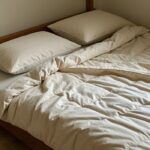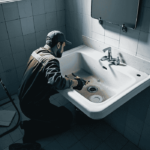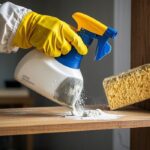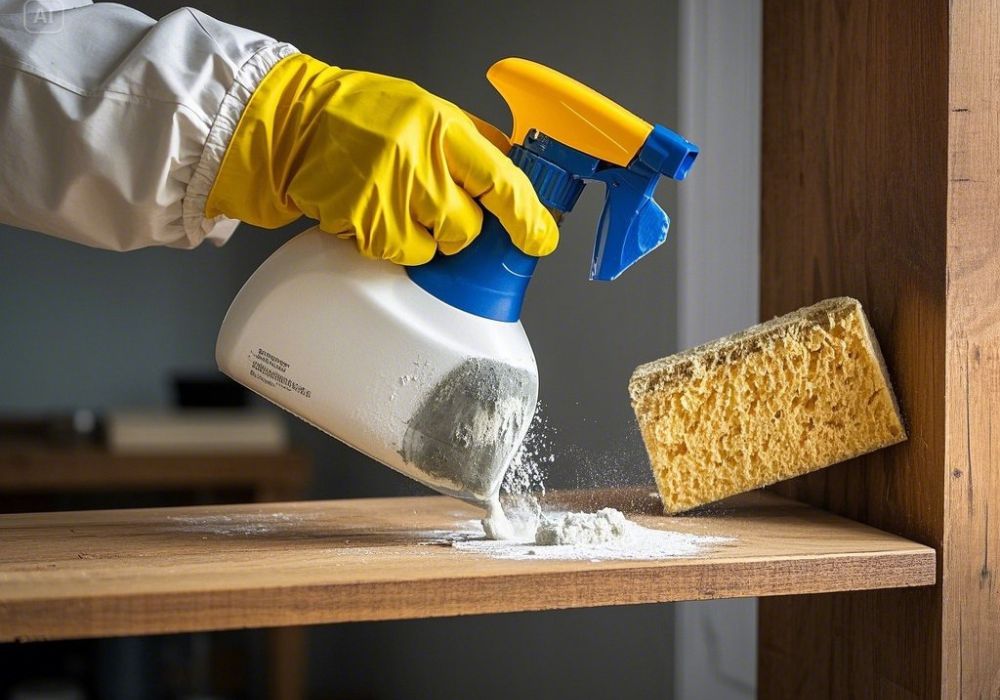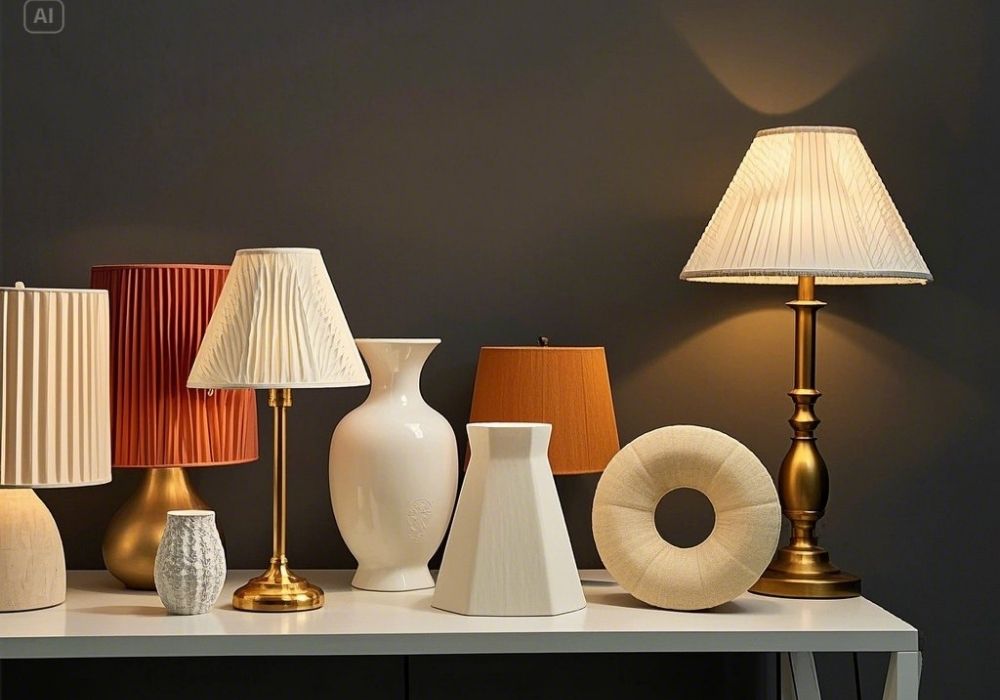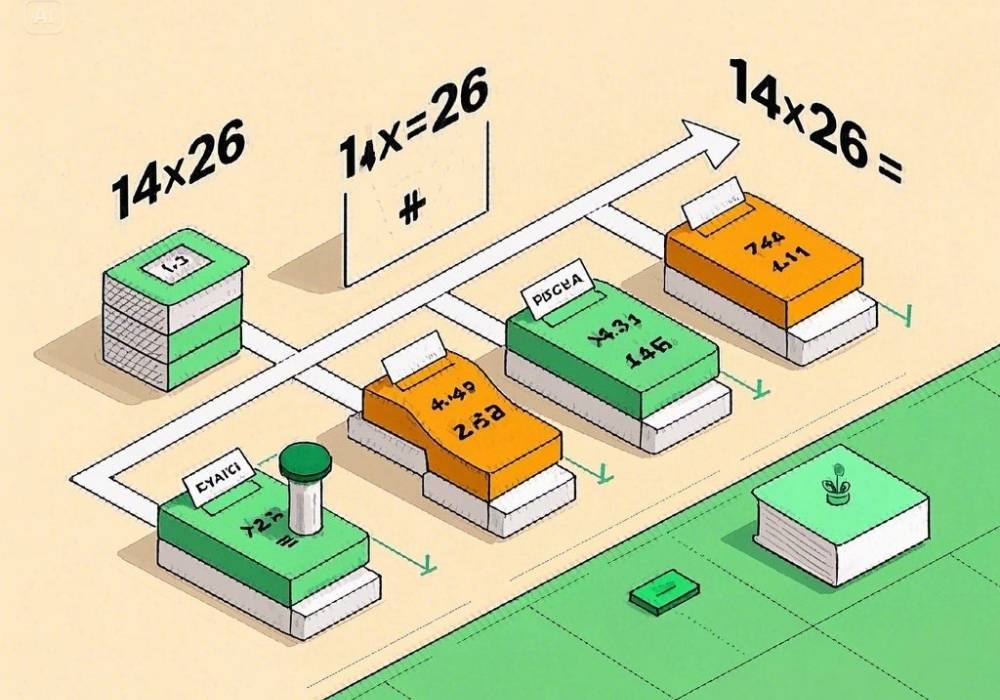Mold on wood isn’t just an annoying eyesore; it can pose significant health risks and even damage your property if left untreated. Whether it’s your furniture, floors, or structural beams, mold can quickly become a problem in damp or humid environments.
Removing mold from wood might sound like a daunting task, but with the right techniques and tools, you can safely restore your wood surfaces to their original condition. This guide will walk you through everything you need to know, from why mold grows on wood to step-by-step instructions for getting rid of it.
Why Does Mold Grow on Wood?
Mold thrives in damp, humid environments, making wood surfaces an ideal place for it to grow. Wood is porous, which means moisture can seep into it, providing the perfect breeding ground for mold. This often happens in areas like basements, bathrooms, kitchens, or any spot where moisture levels are high and ventilation is low.
Common causes of mold growth on wood include:
- Water leaks in roofs, pipes, or walls.
- High humidity, often in spaces like basements or attics.
- Continuous exposure to condensation, especially on wooden window frames or doors.
- Flooding or water spillage, where wood is not dried properly afterward.
Understanding how mold forms can help you prevent it from making a comeback after removal.
Tools and Materials You’ll Need
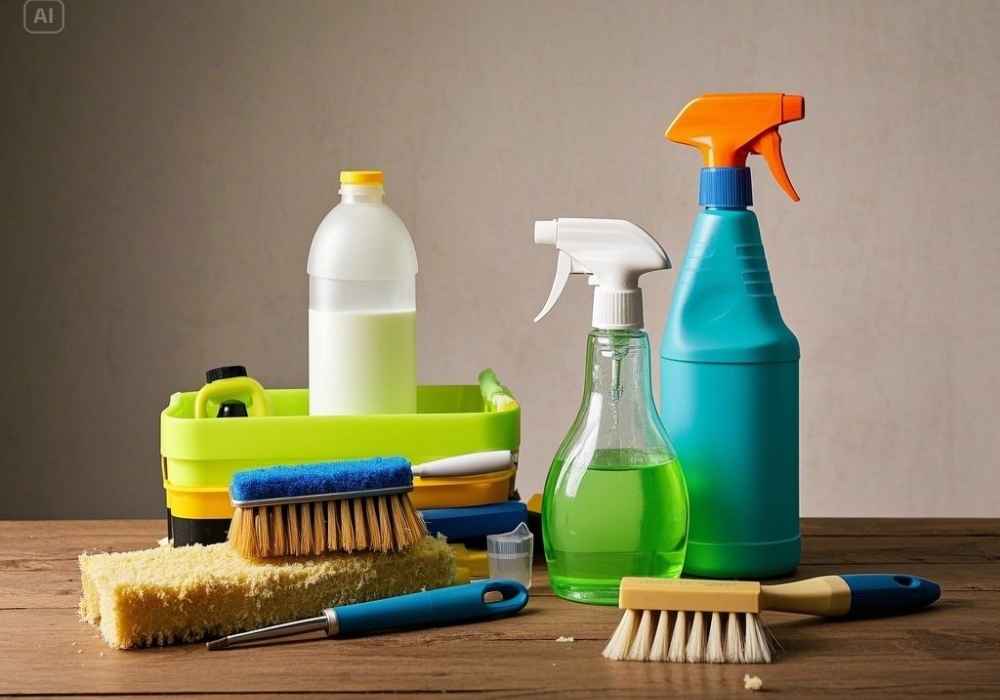
Before tackling mold, it’s essential to prepare. You’ll want to have the right tools and materials to get the job done effectively and, more importantly, safely.
Tools and Supplies:
- Gloves
- Safety goggles
- N95 or comparable mask to prevent inhalation of mold spores
- Soft bristle brush or scrub sponge
- Vacuum with HEPA filter
- Plastic sheeting (if containing spread is necessary)
Cleaning Agents:
- White vinegar (an effective natural cleaner)
- Baking soda mix
- Dish soap
- Commercial mold cleaner (if preferred)
- Bleach (only for non-porous wood surfaces)
- Dry cloth or towel
How to Remove Mold from Wood in 6 Steps
Step 1: Protect Yourself and Contain the Area
Mold removal can release spores into the air, which pose health risks. Always wear gloves, goggles, and a mask to protect yourself from inhaling harmful particles.
If you’re cleaning mold in a confined area, use plastic sheeting to seal off the space and prevent spores from spreading to other parts of your home. Ventilate the area by opening windows or using an exhaust fan.
Step 2: Vacuum Loose Mold
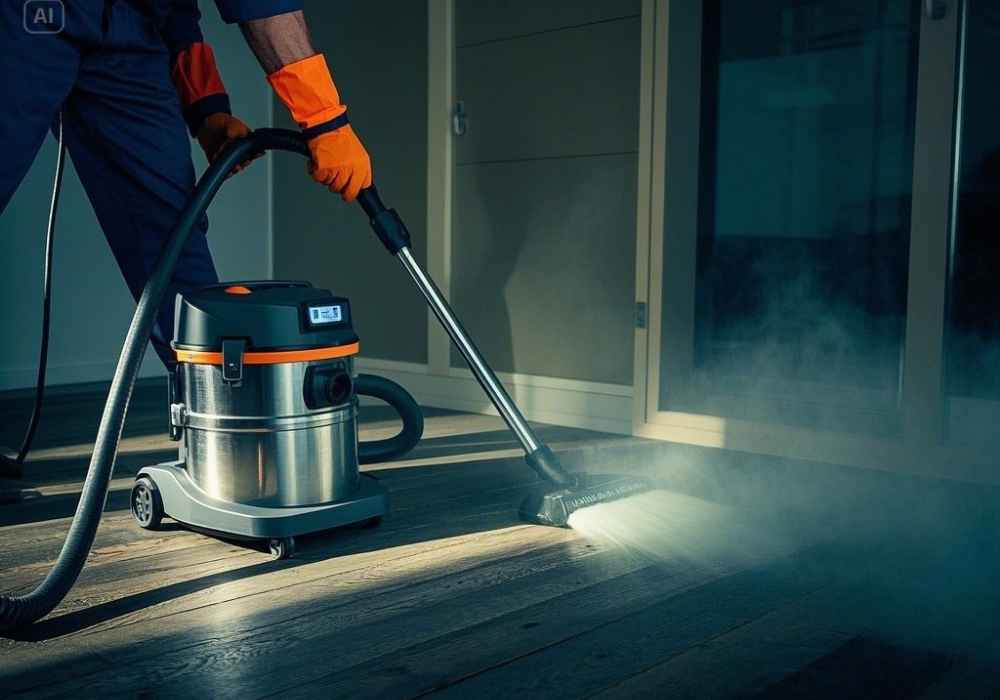
Start by vacuuming the moldy wood surface using a vacuum equipped with a HEPA filter. This helps to remove loose mold spores before applying any cleaning solutions. Once done, discard the vacuum bag or empty the canister outdoors to prevent recontamination.
Step 3: Apply a Cleaning Solution
The cleaning solution you choose will depend on the type of wood and the severity of the mold. Here are some effective options:
- White Vinegar: Mix equal parts of vinegar and warm water in a spray bottle. Spray the solution onto the moldy surface and let it sit for an hour before scrubbing.
- Dish Soap and Water: Mix a few drops of dish soap with warm water. This is particularly effective for light mold patches on painted or sealed wood.
- Baking Soda Paste: For stubborn mold, mix baking soda and water to form a paste and apply it to the surface. Baking soda also acts as a deodorizer to remove any musty smell.
- Commercial Mold Cleaner: Opt for a store-bought cleaner specifically designed for mold if you need a more heavy-duty option.
Avoid using bleach on porous surfaces, as it doesn’t penetrate the wood and kills only the mold on the surface while potentially leaving live spores deeper inside.
Step 4: Scrub the Moldy Area
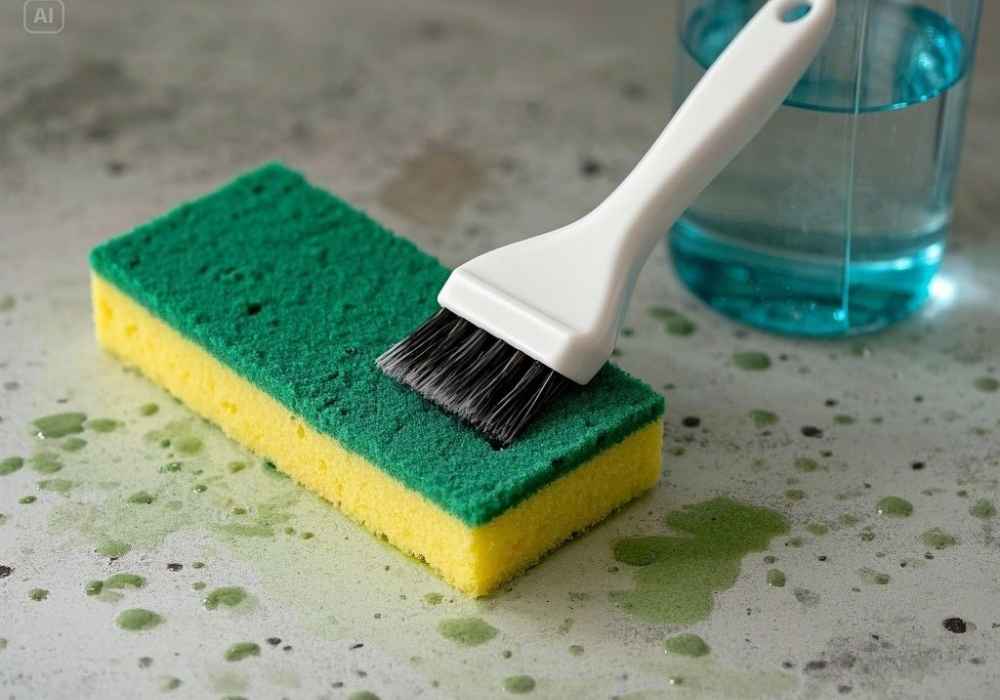
Once the cleaning solution has had time to settle, use a soft bristle brush or sponge to scrub the mold gently. Be careful not to saturate the wood, as excess moisture can lead to further mold growth. Scrub thoroughly but gently to avoid damaging delicate wood surfaces.
Step 5: Wipe and Dry the Area
After scrubbing, wipe the surface clean with a dry cloth or towel to remove excess moisture. Use a fan or dehumidifier to accelerate the drying process. Mold thrives in damp conditions, so it’s critical to ensure the wood is completely dry.
Step 6: Sand the Wood (If Necessary)
If the mold has penetrated deep into the wood and left stains, sanding might be necessary. Use fine-grit sandpaper to gently remove the affected top layer of the wood. Be sure to vacuum and clean up any dust afterward to avoid reintroducing mold spores to the area.
How to Prevent Mold from Returning to Wood
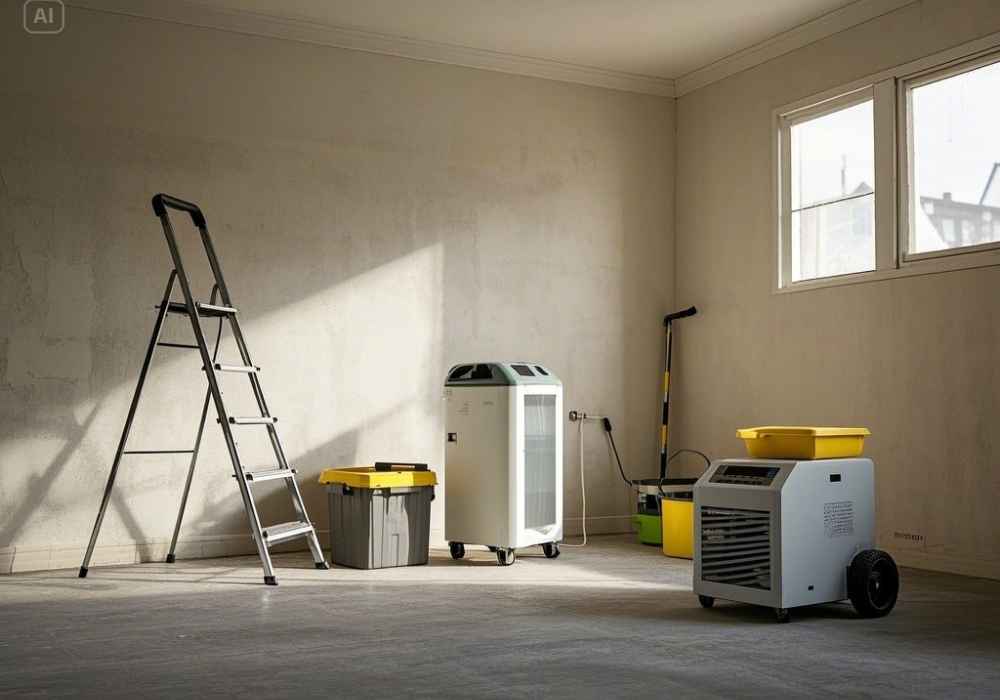
Now that you’ve successfully cleaned the mold, take steps to ensure it doesn’t come back. Prevention is key to maintaining a mold-free home.
- Control Humidity: Keep humidity levels below 50% using a dehumidifier or air conditioner.
- Fix Leaks Promptly: Repair any leaks in your roof, pipes, or walls as quickly as possible.
- Improve Ventilation: Use exhaust fans in bathrooms and kitchens or open windows to increase airflow.
- Keep Wood Surfaces Dry: Wipe up spills immediately and avoid leaving wet items on wooden surfaces.
- Seal and Treat Wood: Apply a water-resistant seal or mold-resistant solution to wood that’s prone to damp conditions, such as furniture in basements or garages.
When to Call a Professional
While DIY methods are effective for many mold removal scenarios, some cases are too severe to handle on your own. Call a professional if:
- Mold covers an area larger than 10 square feet.
- You notice mold has spread to structural wood, such as beams or floorboards.
- You experience persistent health issues like allergies or respiratory problems when around the mold.
Professional remediation services have the tools and expertise to eliminate molds safely and effectively.
Your Mold-Free Home Awaits
Removing mold from wood is entirely possible with the right tools and techniques, and more importantly, with a proactive approach to prevention, you can ensure it doesn’t return.
By taking the time to clean mold thoroughly and maintain a dry, well-ventilated environment, you’ll protect both your home and your health.
And the best part? You don’t need to be a professional to get this done.
Have more tips on combating mold? Share them in the comments below!

